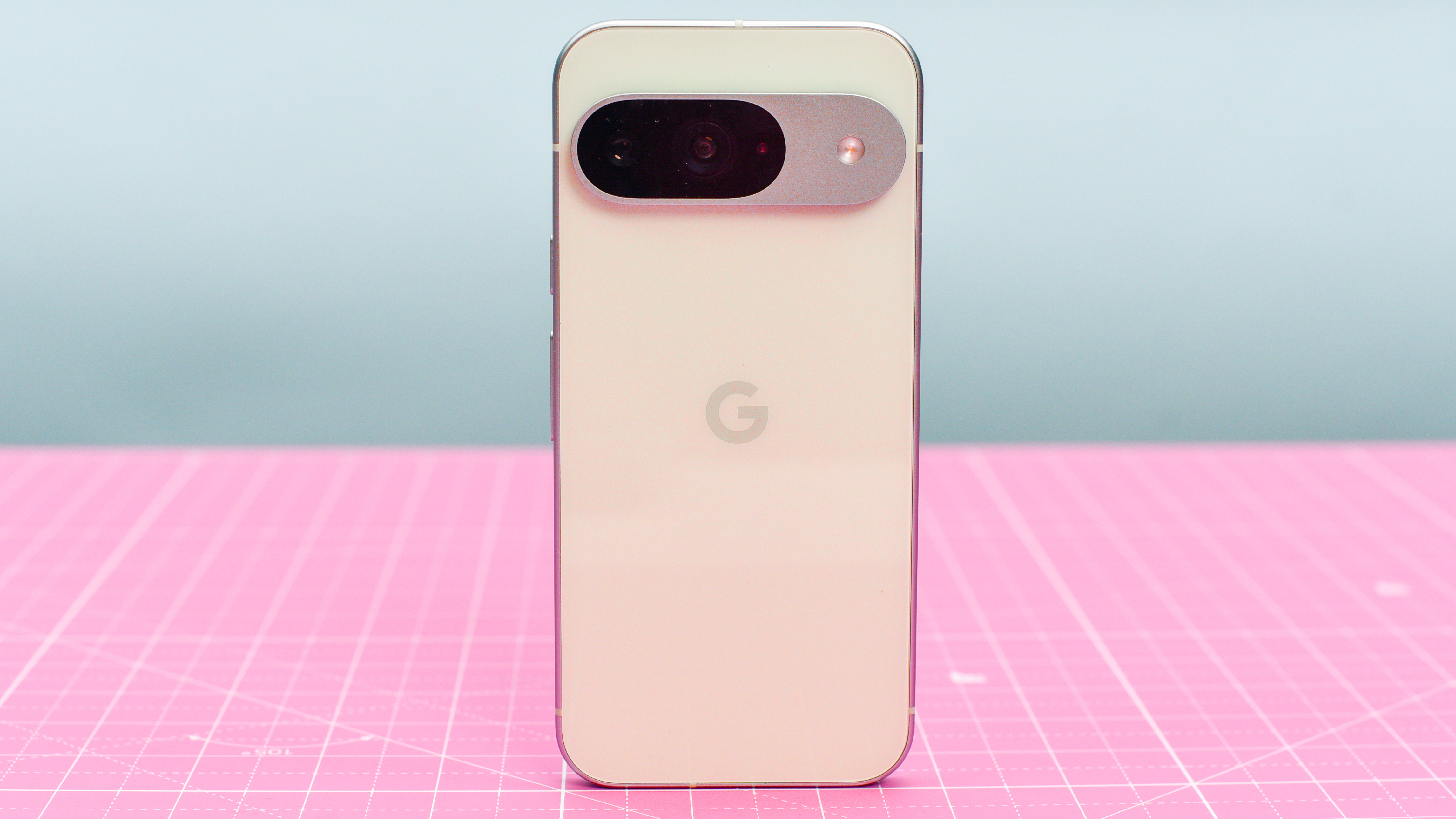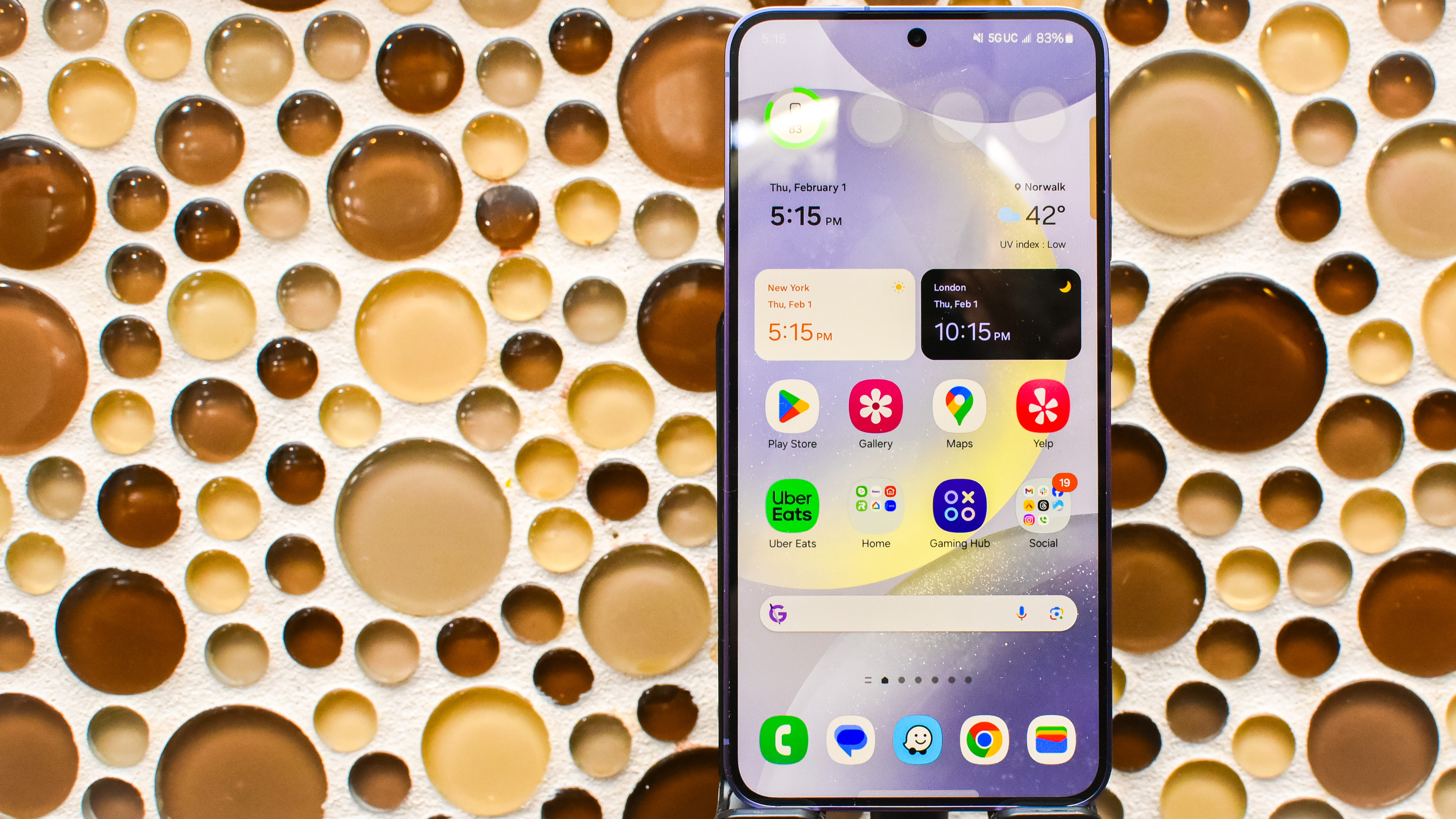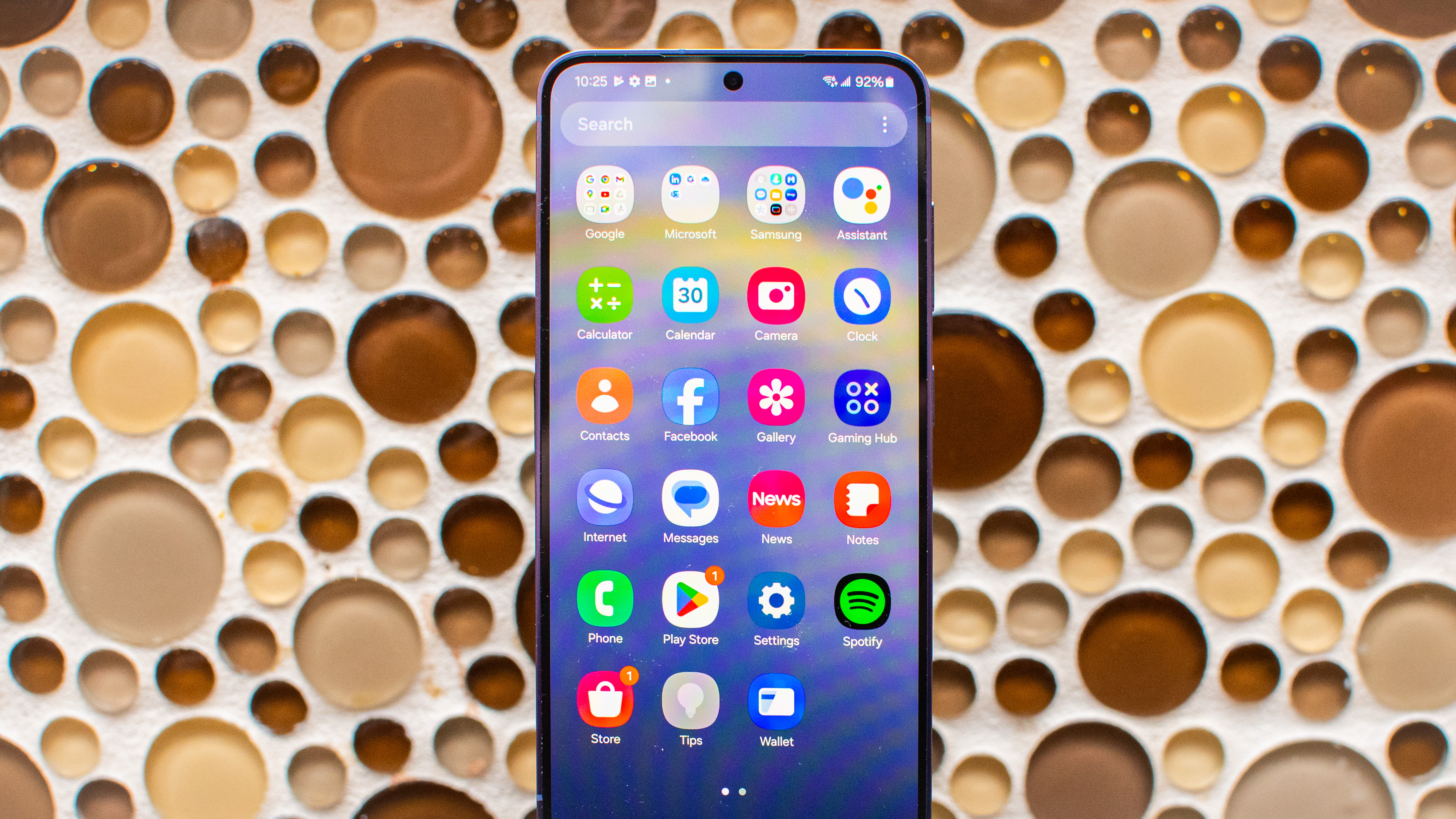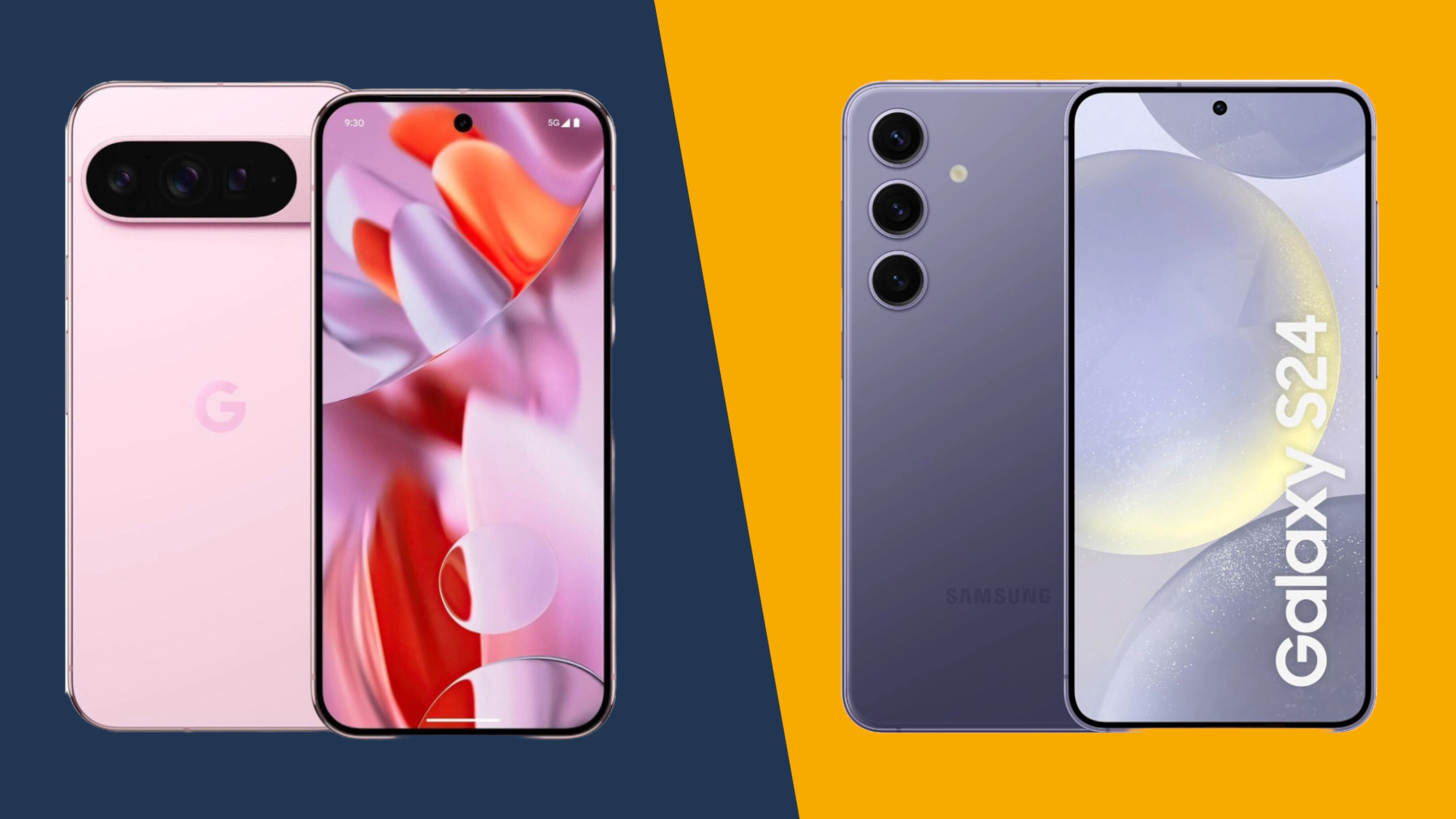
The Pixel 9 is the classiest phone Google has ever made, with a sharp new design and a very strong camera added to a crisp and clean UI and a stunning display.
For
- Clean new design very similar to the Pro model
- Superb photographs in all lighting conditions
- Clean UI with some worthwhile AI features
Against
- Considerable price bump
- Not all AI features are worthwhile
- Performance is relatively poor for a flagship phone

The Samsung Galaxy S24 is a flagship phone that compromises surprisingly little considering its compact size and competitive pricing, with a premium design and a dedicated telephoto camera serving as highlights.
For
- Excellent performance
- Compact, sleek design
- Dedicated telephoto camera
Against
- Samsung’s software is messy
- Galaxy AI is a mixed bag
- Camera quality is not up there with the best
The Google Pixel 9 represents Google’s most naked bid yet to deliver the ‘iPhone of Android’ that every phone manufacturer (other than Apple) dreams of bringing to market. Prior to its launch, the most obvious contender for that title was the Samsung Galaxy S24, which makes for a fascinating comparison between the two phones.
These two classy compact flagships share a lot in common, including a basic size and shape, a resolute focus on AI tricks, similar pricing, the same exemplary software support, and camera features that appear to have been taken from significantly more expensive phones.
So, how exactly do they stack up to one another? We’ve reviewed both phones, and spent considerable time testing out their various features since then. We can safely say from the outset that this particular battle is going to be very closely fought.
Google Pixel 9 vs Samsung Galaxy S24: specs comparison
Before we delve into the fine points, let’s run through the key specifications of these two phones. While they’re operating in similar territory, there are some surprising points of difference right off the bat.
Swipe to scroll horizontally
| Header Cell – Column 0 | Google Pixel 9 | Samsung Galaxy S24 |
|---|---|---|
| Dimensions: | 152.8 x 72 x 8.5mm | 147 x 70.6 x 7.6mm |
| Weight: | 198g | 167g |
| Display: | 6.3-inch OLED | 6.1-inch OLED |
| Resolution: | 1080 x 2424 | 1080 x 2340 |
| Refresh rate: | 120Hz | 120Hz |
| Chipset: | Google Tensor G4 | Snapdragon 8 Gen 3 / Exynos 2400 |
| Rear cameras: | 50MP (wide), 48MP (ultra-wide) | 50MP (wide), 12MP (ultra-wide), 10MP (telephoto) |
| Front camera: | 10.5MP | 12MP |
| RAM: | 12GB | 8GB |
| Storage: | 128GB, 256GB | 128GB / 256GB / 512GB (AU only) |
| Battery: | 4,700mAh | 4,000mAh |
Google Pixel 9 vs Samsung Galaxy S24: price and availability

Google brought forward its launch schedule for the Pixel 9, releasing the phone into shops on August 22, 2024. This was about seven months on from Samsung’s Galaxy S24 launch on January 17.
Pricing is very similar indeed between the two. The Pixel 9 starts from $799 / £799 / AU$1,349 for the 128GB model, while the 256GB model will set you back $899 / £899 / AU$1,499.
The Samsung Galaxy S24 officially starts from $799 / £799 for 128GB, which is very similar to the Pixel 9. However, the larger 256GB model proves to be slightly better value than its Pixel 9 equivalent, costing $859 / £859 / AU $1,399. Australian customers also get a 512GB option for AU$1,599.
There’s also the fact that the Galaxy S24 is a crucial seven months older, meaning you’re more likely to find a major discount from third-party retailers. As such, we’d call the Samsung phone the winner in the value-for-money stakes.
Google Pixel 9 vs Samsung Galaxy S24: design

After various design iterations and revisions, both Google and Samsung seem to have come to the same basic conclusion: if you want to appeal to the masses, make your phone look like an iPhone.
Both the Pixel 9 and Galaxy S24 look a lot like the iPhone 15, with similar flat metal frames, tightly curved corners, and bold block color finishes. As a result, they also look quite a lot like one another.
They’re far from identical, though. The main point of differentiation is on the back of the phones, where the Pixel 9 adopts a striking camera bar that runs most of the width of the phone and stands out some way from the body. It’s certainly more visually appealing than Samsung’s more muted approach, with each of its three cameras getting their own discrete housing.

Conversely, the Galaxy S24’s subtle style makes it feel more slender in the hand. At 147 x 70.6 x 7.6mm and 167g, it’s quite a bit smaller and lighter than the Pixel 9, which weighs in at a relatively hefty 152.8 x 72 x 8.5mm and 198g. Samsung also wins brownie points for providing far more color options – there are seven to Google’s four. With that said, our reviewer was a big fan of Google’s snazzy Peony and cool Wintergreen options.
Both phones pack aluminum frames and Gorilla Glass Victus 2 on the front and back, with IP68 ratings providing an identical amount of water and dust resistance. We can’t fault either for their build quality.
All in all, we’d probably give the Pixel 9 the nod in the design stakes due to its nicer hand feel and more striking rear design, but there really isn’t a lot in it, and there’s much to be said for the Galaxy S24’s more compact size.
Google Pixel 9 vs Samsung Galaxy S24: display

Samsung is typically right at the top of the display game – it makes screens for most other manufacturers, after all. However, it’s Google that carries a slight edge in this particular display round.
At 6.3 inches, the Pixel 9’s AMOLED display is slightly larger than the 6.2-inch Galaxy S24 equivalent. Both phones feature similar resolutions, at 1080 x 2424 for the Pixel and 1080 x 2340 for the Galaxy S24.

The Pixel 9’s screen also gets just a little brighter than the Galaxy S24’s, at 2,700 nits compared to 2,600 nits in peak HDR conditions. It’s a small advantage, but an advantage nonetheless.
In practice, these are two excellent screens that no one is going to be complaining about. This probably shouldn’t be the deciding factor in whichever compact flagship phone you opt for, but if it is, the Pixel deserves to hold sway.
Google Pixel 9 vs Samsung Galaxy S24: cameras

As similar as their phones are in many ways, Samsung and Google take very different approaches to their respective camera setups. Google looks to give you two-thirds of its flagship ‘Pro’ experience on the standard Pixel 9, offering exactly the same wide and ultra-wide sensors as the Pixel 9 Pro XL, but omitting the telephoto camera altogether.
Samsung, by contrast, looks to approximate the overall Samsung Galaxy S24 Ultra photography experience in the standard Galaxy S24, offering all three basic camera ranges – including a telephoto – but offering fewer components in each department.
With the Pixel 9, you’re getting a 50MP 1/1.31“ main image sensor with an f/1.7 aperture, while the Galaxy S24 supplies an inferior 50MP 1/1.56” sensor with an f/1.8 aperture. Google also supplies a 48MP 1/2.55“ ultra-wide with dual pixel PDAF and a 123-degree field of view, compared to Samsung’s 12MP 1/2.55” sensor and 120-degree field of view.

However, Samsung also gives you a dedicated 10MP 1/3.94″ 3x telephoto camera, making it better for close-ups from afar. Google needs to crop in on that main sensor for its own zoomed shots.
Telephoto aside, the Pixel 9 takes flat-out superior shots in all conditions, especially as the light starts to drop. It might not have the same range of shooting options, but Google’s phone takes shots of comparable quality to the more premium Pixel 9 Pro, while the Galaxy S24 is very much a second-tier operator in Samsung’s range.
Ultimately, it’s a toss-up between greater quality in the Pixel 9 or greater shooting flexibility in the Galaxy S24. We reckon the Pixel 9’s quality edges it.
Both manufacturers deserve credit for equipping their respective front cameras with autofocus, which makes for much cleaner and sharper snaps. These are two excellent options for selfie-takers.
Google Pixel 9 vs Samsung Galaxy S24: performance and software

If there’s one area in which the Galaxy S24 obliterates the Pixel 9, it’s performance. Whether you’re using the global model with Samsung’s own Exynos 2400 or the US model with Qualcomm’s Snapdragon 8 Gen 3, the Galaxy S24’s CPU and GPU benchmark test results knock the Pixel 9’s Tensor G4 into a cocked hat.
Indeed, you’ll find that the Pixel 9 is outmatched by the previous generation’s Galaxy S23 in most of the commonly used benchmark tests, let alone the Galaxy S24.
Google will always stress that its phones are all about AI performance, and sure enough, it has kitted the Pixel 9 out with 12GB of RAM for such memory-munching tasks (the Galaxy S24 only has 8GB). But in intensive scenarios like multi-tasking and high-end 3D games, the Pixel 9 is clearly more hesitant than the Galaxy S24.
This makes us worry for the future of the Pixel 9 far more than that of the Galaxy S24. Both manufacturers supply generous seven-year software update promises, but it’s Samsung’s phone that seems more likely to remain feeling fluid for the foreseeable future, despite the aforementioned RAM deficit.

Talking of software, both phones ship with Android 14, which means Google doesn’t have its usual software advantage straight out of the gate. Android 15 wasn’t quite ready for the Pixel 9’s launch, though it still came to the phone ahead of the Galaxy S24.
More importantly, though, Google’s clean UI is simply way more pleasant to use than Samsung’s cluttered custom One UI. Our reviewer counted the Galaxy S24’s software as its outstanding weakness, stating that “the aging One UI is harder to use than ever before”, not least thanks to its labyrinthine menu system, duplicate app store, and the sheer amount of bloatware.
Both manufacturers are leaning hard into AI, but Google’s approach is arguably the more cohesive. This is because Samsung’s approach to AI is a bit of a mish-mash, combining its own Galaxy AI initiative with some of Google’s Gemini AI features. To that end, there’s a fair amount of crossover here, with both phones capable of doing things like Circle to Search.
Samsung leans on its Galaxy AI for real-time translation, though Google has its own equivalent on the Pixel 9. You’ll need to sign up for a subscription to access the likes of the new Gemini Live conversation tool, though.
On the personal assistant front, Samsung sticks with the moribund Bixby while Google has swapped out its Google Assistant for the exciting Gemini AI. The latter doesn’t get everything right by any means, but it’s capable of some impressively natural interactions.

Meanwhile, the Pixel 9’s new Screenshots app reads all the information in your new screenshots, then arranges and summarizes them. Pixel Studio lets you create custom artwork based on natural language requests, which is cool but relatively pointless.
Google Pixel 9 vs Samsung Galaxy S24: battery life

One reason the Pixel 9 is so much thicker and heavier than the Galaxy S24 is that it has a much larger battery. We’re talking 4,700mAh for the Pixel and 4,000mAh for the Galaxy.
You’d think that would result in a huge stamina advantage for the Google phone, but Samsung is extremely good at optimizing energy efficiency on its devices. As a result, both of these phones will last you a day of moderate to heavy usage without issue. The Galaxy S24 is arguably the more impressive of the two in this respect, and we’d like to see Google making further inroads with its own optimization efforts.
When it comes time to recharge times, neither of these phones is hugely impressive. Google’s phone supports 27W charging with a compatible charger (not supplied), while Samsung’s phone supports 25W (also not supplied). Both will get you to around the 50% mark, from empty, with a 30-minute charge, with the Pixel 9 perhaps getting a few percent higher. Meanwhile, the Xiaomi 14 and OnePlus 12 can get you to full in half the time.
Both phones support wireless charging, which is always welcome, if not unexpected.
Google Pixel 9 vs Samsung Galaxy S24: verdict

Both the Google Pixel 9 and Samsung Galaxy S24 earned a 4 out of 5 review score from us, which indicates that both are worthy picks if you’re in the market for a compact flagship. Analyzing which is the best of the two has proven to be a tricky task, and it largely comes down to your priorities.
The Pixel 9 arguably screams ‘premium’ more than the Galaxy S24, with its sharper design, slightly bigger and brighter display, and superior main and ultra-wide cameras. We’d take Google’s software provision over Samsung’s every day of the week, too, and its AI offering seems slightly more cohesive.
Conversely, the Galaxy S24 offers a slimmer and lighter build, which is all the more important in such compact flagship phones. It also gives you considerably more performance, which power users and gamers will want to take note of. Meanwhile, if you favor taking zoomed-in photographs, this is the only phone of the two with a dedicated telephoto camera.
On balance, the Pixel 9 is the fresher, sharper phone of the two, and probably a better pick for most people. However, the Galaxy S24 still boasts lots to love, especially given the likelihood that you’ll be able to find one for a significantly cheaper price.
You might also like
- Google Pixel 9 Pro vs Google Pixel 8 Pro
- Google Pixel 9 Pro vs Samsung Galaxy S24 Ultra
- Samsung Galaxy S24 Ultra vs Google Pixel 8 Pro
